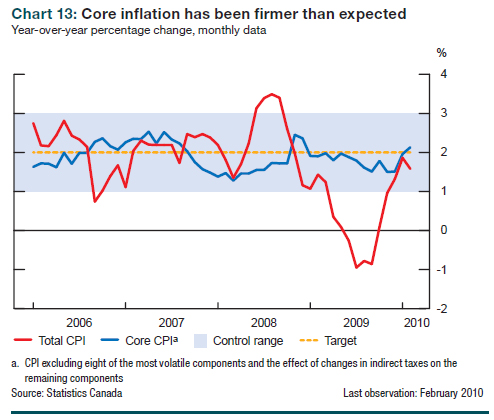IIROC has announced that downtown Toronto will be safe and accessible under any conceivable conditions:
IIROC recently decided to cancel the industry business continuity planning test that was scheduled for June 26, 2010 due to complications associated with the G20 meeting which is now scheduled in Toronto for June 26-27, 2010. IIROC considered rescheduling the test for the latter part of 2010 but that again proved to be impractical considering the length of time utilities require for participation in such tests.
As a result we have rescheduled the industry test to September 10, 2011. Subsequent business continuity planning tests will be conducted on a bi-annual basis thereafter.
We can only hope that when Al-Quaeda decides to nuke Toronto, they give the utilities proper notice. It is of interest to learn that firms must, by regulatory decree, prepare for fire, famine, earthquakes, terrorism, tornados and plagues of frogs; but that G-20 meetings are considered Acts of God. Our glorious Finance Minister will be pleased!
Senator Carl Levin is shocked at Goldman Sachs’ attitude:
“Investment banks such as Goldman Sachs were not simply market-makers, they were self-interested promoters of risky and complicated financial schemes that helped trigger the crisis,” Levin, 75, said in a statement released with the e-mails.
Self-interest? Promotion? In the co-operative game that is the financial world? Oh, the horror!
At least Fabulous Fab writes entertaining eMails:
The so-called ABX index is “the type of thing which you invent telling yourself: ‘Well, what if we created a ‘thing,’ which has no purpose, which is absolutely conceptual and highly theoretical and which nobody knows how to price?’” [Goldman Sachs executive director Fabrice] Tourre said in a Jan. 29, 2007, e-mail released yesterday by Goldman Sachs. Watching the index fall is “a little like Frankenstein turning against his own inventor.”
The shortcomings – well, they’re more like odd nuances, actually – of the ABX index have been discussed on PrefBlog throughout the Credit Crunch.
DBRS has commented on the Bank of Ireland capital raise:
Today’s comment follows Bank of Ireland’s announcement of a fully underwritten proposal to raise EUR 3.421 billion equity tier 1 capital. This proposal includes a EUR 0.5 billion institutional placing of ordinary shares, a partial conversion of the Irish Government’s preference shares of EUR 1.036 billion to ordinary shares, and a rights issue of up to EUR 1.885 billion. The latter rights issue may be reduced by the equity generation and profits from the also just announced debt for equity exchange offer.
…
Importantly, the completion of the proposed actions will allow Bank of Ireland to fulfil its obligation to raise an additional EUR 2.7 billion of equity capital to meet the requirement established as part of the completion of the Financial Regulator’s Prudential Capital Assessment Review for the Irish banking sector. As a result of these actions and the expected National Asset Management Agency (NAMA) transfers, the Group’s equity tier 1 capital ratio, on a pro-forma basis, at 31 December 2009, will increase to 8.0% and the Group will be able to maintain a minimum equity tier 1 ratio of greater than 7% going forward. Moreover, the announcement includes the full cancellation of the Government’s warrants in the Group in return for a cash payment of EUR 491 million, reducing the potential for the Government to increase its holdings in the Group. As a result, the Irish Government’s maximum ownership will be 36% that compares to a current fully diluted ownership of 34%, prior to completion of this transaction.
The Irish bank capital requirements have been previously discussed.
PerpetualDiscounts were hit hard today, losing 26bp on heavy volume while FixedResets lost a mere 4bp,
| HIMIPref™ Preferred Indices These values reflect the December 2008 revision of the HIMIPref™ Indices Values are provisional and are finalized monthly |
|||||||
| Index | Mean Current Yield (at bid) |
Median YTW |
Median Average Trading Value |
Median Mod Dur (YTW) |
Issues | Day’s Perf. | Index Value |
| Ratchet | 2.56 % | 2.63 % | 52,706 | 20.93 | 1 | 1.8519 % | 2,157.2 |
| FixedFloater | 4.92 % | 2.99 % | 45,504 | 20.40 | 1 | -0.4504 % | 3,252.7 |
| Floater | 1.92 % | 1.67 % | 49,284 | 23.43 | 4 | 0.0122 % | 2,409.4 |
| OpRet | 4.91 % | 3.86 % | 136,725 | 1.21 | 10 | -0.0078 % | 2,301.5 |
| SplitShare | 6.40 % | 6.53 % | 139,614 | 3.58 | 2 | -0.2642 % | 2,131.9 |
| Interest-Bearing | 0.00 % | 0.00 % | 0 | 0.00 | 0 | -0.0078 % | 2,104.5 |
| Perpetual-Premium | 5.91 % | 4.77 % | 29,566 | 15.86 | 2 | 0.0410 % | 1,823.1 |
| Perpetual-Discount | 6.26 % | 6.32 % | 215,287 | 13.47 | 76 | -0.2620 % | 1,704.0 |
| FixedReset | 5.53 % | 4.39 % | 522,550 | 3.61 | 44 | -0.0371 % | 2,139.4 |
| Performance Highlights | |||
| Issue | Index | Change | Notes |
| BNS.PR.R | FixedReset | -1.51 % | YTW SCENARIO Maturity Type : Call Maturity Date : 2014-02-25 Maturity Price : 25.00 Evaluated at bid price : 25.45 Bid-YTW : 4.49 % |
| GWO.PR.G | Perpetual-Discount | -1.31 % | YTW SCENARIO Maturity Type : Limit Maturity Maturity Date : 2040-04-26 Maturity Price : 20.28 Evaluated at bid price : 20.28 Bid-YTW : 6.50 % |
| HSB.PR.C | Perpetual-Discount | -1.19 % | YTW SCENARIO Maturity Type : Limit Maturity Maturity Date : 2040-04-26 Maturity Price : 20.01 Evaluated at bid price : 20.01 Bid-YTW : 6.46 % |
| PWF.PR.E | Perpetual-Discount | -1.07 % | YTW SCENARIO Maturity Type : Limit Maturity Maturity Date : 2040-04-26 Maturity Price : 21.27 Evaluated at bid price : 21.27 Bid-YTW : 6.51 % |
| SLF.PR.B | Perpetual-Discount | -1.00 % | YTW SCENARIO Maturity Type : Limit Maturity Maturity Date : 2040-04-26 Maturity Price : 18.78 Evaluated at bid price : 18.78 Bid-YTW : 6.47 % |
| BAM.PR.E | Ratchet | 1.85 % | YTW SCENARIO Maturity Type : Limit Maturity Maturity Date : 2040-04-26 Maturity Price : 22.49 Evaluated at bid price : 22.00 Bid-YTW : 2.63 % |
| Volume Highlights | |||
| Issue | Index | Shares Traded |
Notes |
| BNS.PR.X | FixedReset | 286,007 | Desjardins crossed blocks of 249,900 and 25,000, both at 26.90. YTW SCENARIO Maturity Type : Call Maturity Date : 2014-05-25 Maturity Price : 25.00 Evaluated at bid price : 26.90 Bid-YTW : 4.29 % |
| BMO.PR.J | Perpetual-Discount | 103,663 | Desjardins crossed 50,000 at 19.11. YTW SCENARIO Maturity Type : Limit Maturity Maturity Date : 2040-04-26 Maturity Price : 19.08 Evaluated at bid price : 19.08 Bid-YTW : 6.01 % |
| BMO.PR.L | Perpetual-Discount | 69,393 | Desjardins crossed 50,000 at 24.05. YTW SCENARIO Maturity Type : Limit Maturity Maturity Date : 2040-04-26 Maturity Price : 23.80 Evaluated at bid price : 24.00 Bid-YTW : 6.15 % |
| GWO.PR.L | Perpetual-Discount | 54,612 | TD crossed 32,700 at 22.40. YTW SCENARIO Maturity Type : Limit Maturity Maturity Date : 2040-04-26 Maturity Price : 22.07 Evaluated at bid price : 22.16 Bid-YTW : 6.45 % |
| CM.PR.L | FixedReset | 51,655 | TD crossed 20,000 at 26.95. YTW SCENARIO Maturity Type : Call Maturity Date : 2014-05-30 Maturity Price : 25.00 Evaluated at bid price : 26.95 Bid-YTW : 4.46 % |
| TRP.PR.A | FixedReset | 51,505 | RBC crossed 20,000 at 25.19. YTW SCENARIO Maturity Type : Call Maturity Date : 2015-01-30 Maturity Price : 25.00 Evaluated at bid price : 25.25 Bid-YTW : 4.47 % |
| There were 64 other index-included issues trading in excess of 10,000 shares. | |||

